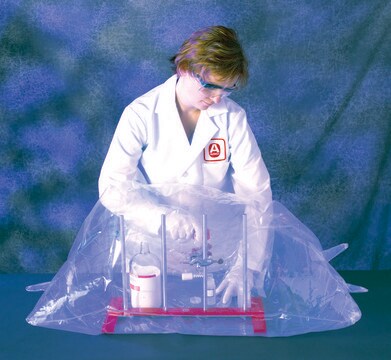V900144
Glycine
98%, Vetec™
Synonyme(s) :
Acide aminoacétique, Acide aminoéthanoïque, Glycocolle
About This Item
Produits recommandés
Nom du produit
Glycine, Vetec™, reagent grade, 98%
Qualité
reagent grade
Gamme de produits
Vetec™
Essai
98%
Forme
powder
Technique(s)
cell culture | plant: suitable
Couleur
white to off-white
pH
5.9-6.4 (20 °C, 50 g/L)
pKa (25 °C)
(1) 2.35, (2) 9.60
2.35
Pf
240 °C (dec.) (lit.)
Chaîne SMILES
NCC(O)=O
InChI
1S/C2H5NO2/c3-1-2(4)5/h1,3H2,(H,4,5)
Clé InChI
DHMQDGOQFOQNFH-UHFFFAOYSA-N
Vous recherchez des produits similaires ? Visite Guide de comparaison des produits
Actions biochimiques/physiologiques
Informations légales
Code de la classe de stockage
13 - Non Combustible Solids
Classe de danger pour l'eau (WGK)
WGK 1
Faites votre choix parmi les versions les plus récentes :
Déjà en possession de ce produit ?
Retrouvez la documentation relative aux produits que vous avez récemment achetés dans la Bibliothèque de documents.
Notre équipe de scientifiques dispose d'une expérience dans tous les secteurs de la recherche, notamment en sciences de la vie, science des matériaux, synthèse chimique, chromatographie, analyse et dans de nombreux autres domaines..
Contacter notre Service technique







